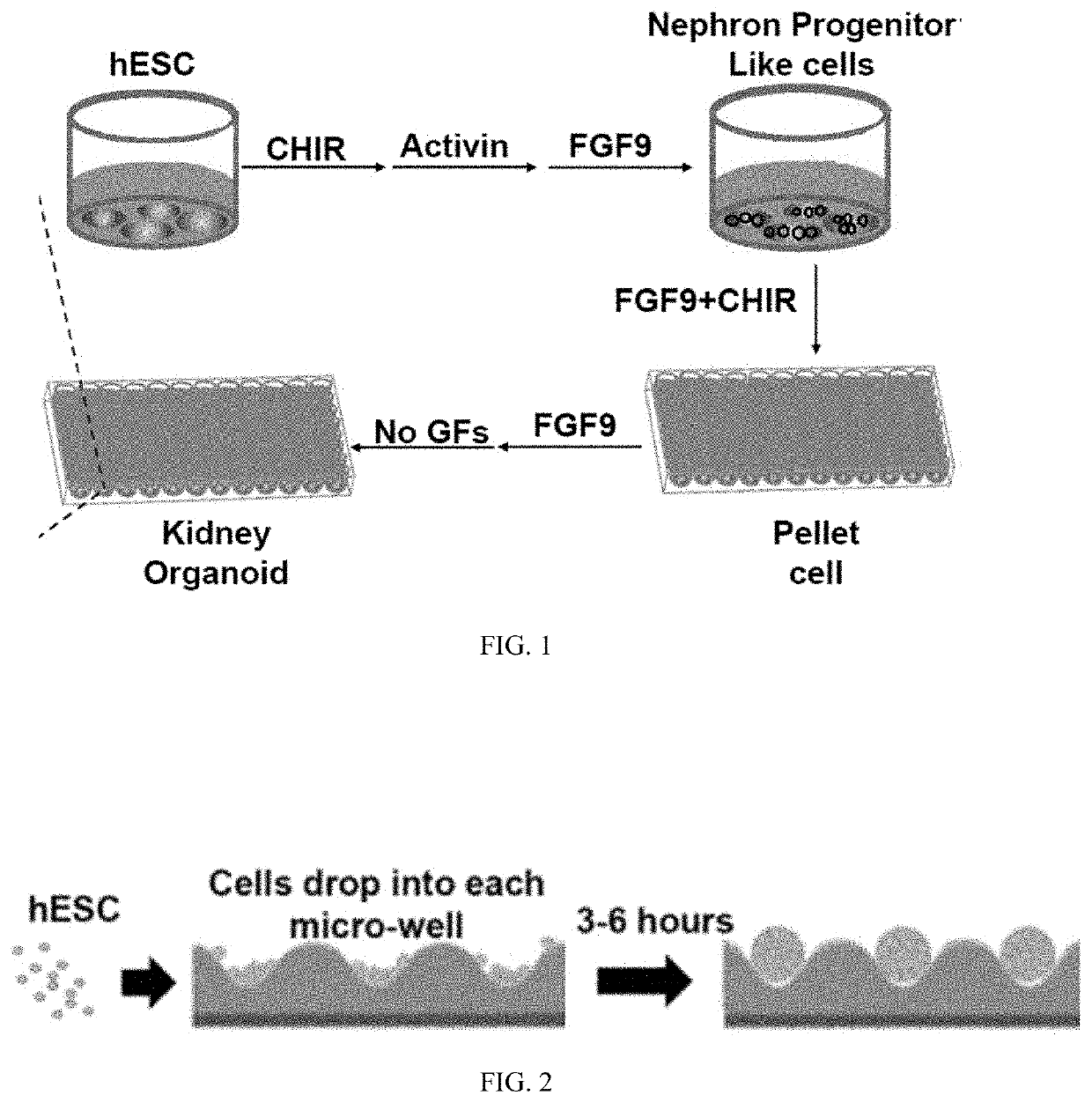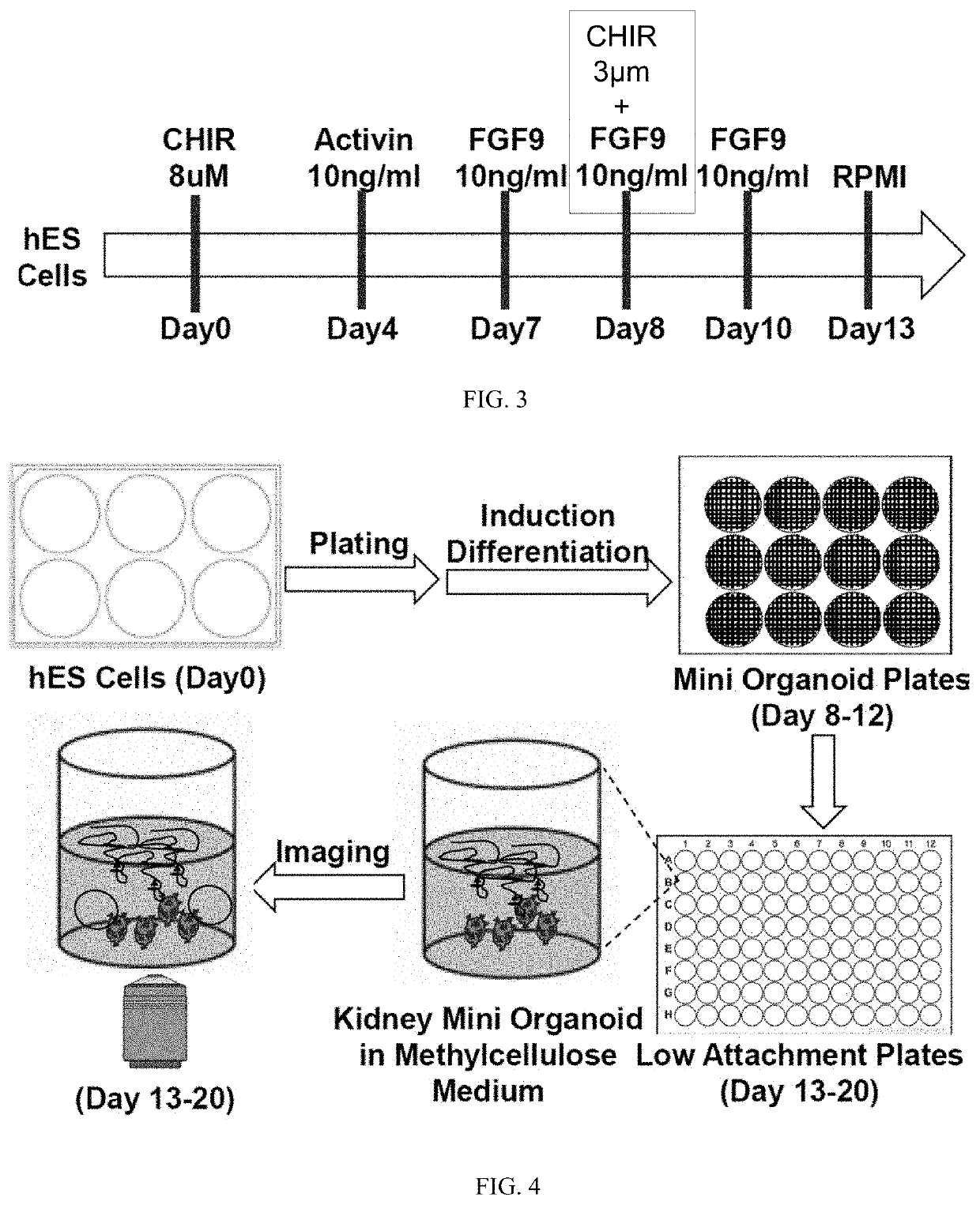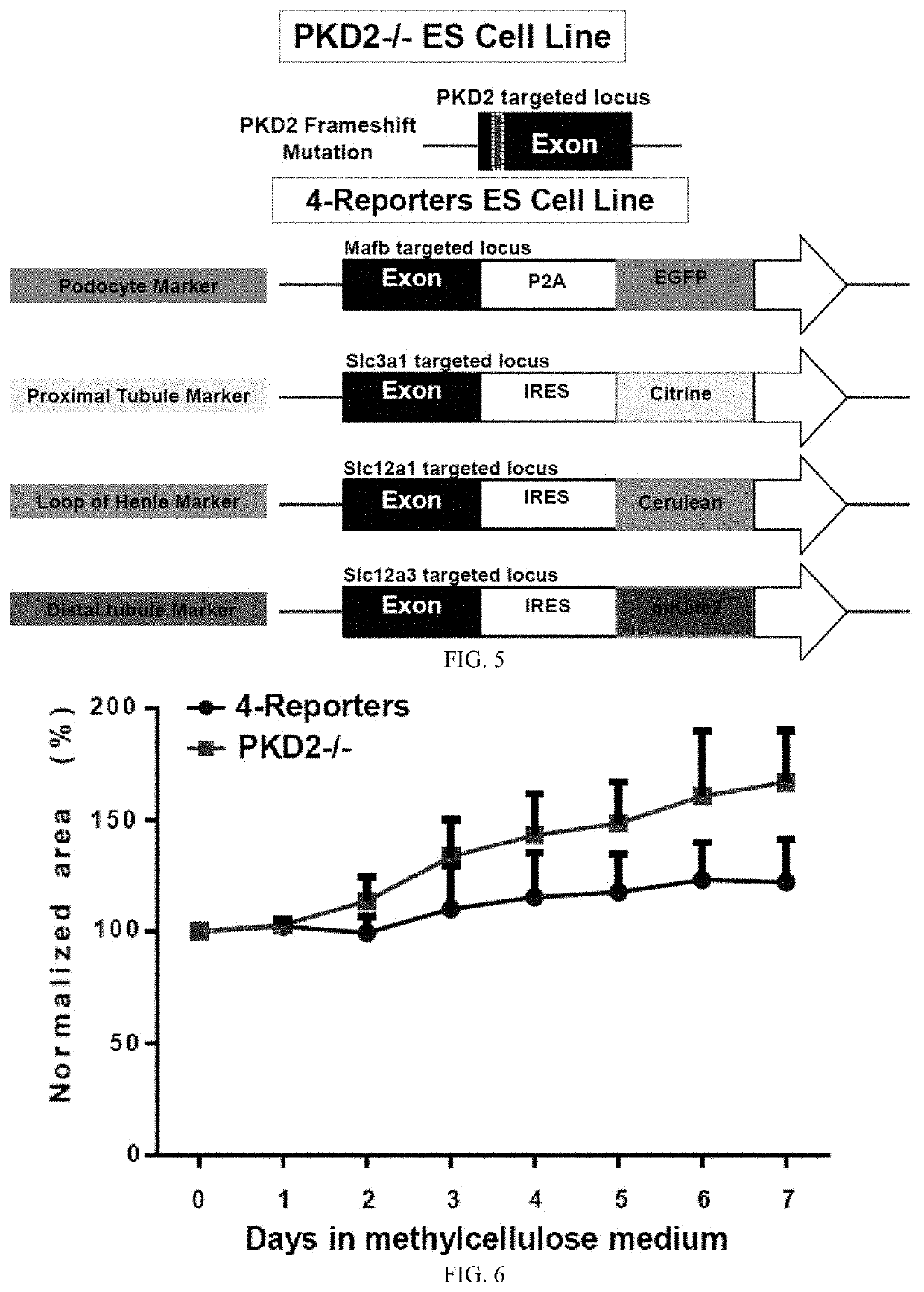Pluripotent stem cell-directed model of autosomal dominant polycystic kidney disease for disease mechanism and drug discovery
a stem cell and autosomal dominant technology, applied in the field of renal organoid enhancement, can solve the problems of end-stage renal failure, lack of human cellular models that accurately and efficiently recapitulate cystogenesis, etc., and achieve the effect of reducing vibration or artifacts and high resolution
- Summary
- Abstract
- Description
- Claims
- Application Information
AI Technical Summary
Benefits of technology
Problems solved by technology
Method used
Image
Examples
example 1
[0132]We have generated PKD2 mutant human ESCs which form cystic kidney mini-organoid cultures of approximately 1000 cells in EZsphere plates. We have employed a 3D culture system to emulate cystic structures in vitro and analyzed cyst initiation. This system was developed by culturing polycystin2 mutant and normal organoids modified to report on development of podocytes in cell culture medium with methylcellulose. In this system, the methylcellulose reduces organoid motility and maintains 3D structure. Together, our new mini organoids 3D culture system has great potential to become a new human model of PKD to assess the function of polycystins at the earliest disease stage.
[0133]Imaging of PKD organoids shows tubule to cyst transitions. In certain depictions herein, 4-Reporters organoid embedded in methylcellulose medium on Day 13 and cultured in the medium for 7 days. In certain depictions herein, PKD organoids embedded and cultured in methylcellulose medium. Arrowheads indicate c...
example 2
f Generating and Uses of Organoids
[0134]1) Miniature Kidney Organoid Cultures
[0135]a) hPSC Maintenance
[0136]GELTREX-Coated Plate Preparation
[0137]For each 6-well or 12-well plate, 12 ml of DMEM / F12 (Life Technologies, 11320-033) was aliquoted into a 50-ml conical vial on an ice beaker. 120 μl of GELTREX was added to DMEM / F12 to make the 1% GELTREX mix. 10-ml serological pipette was used to mix the GELTREX solution thoroughly. 2 ml of 1% GELTREX was pipetted into each well of a 6-well plate (or 1 ml / well for a 12-well plate). The GELTREX plates were incubated at 37° C. / 5% CO2 overnight before use.
[0138]hPSC Expansion and Maintenance
[0139]hPSCs were thawed in STEMFIT media (Ajinomoto, ASB01-R) supplemented with 100 ng / ml of FGF2 (R&D, 273-F9) and 10 μM Y27632 (Tocris, 1254) on 1% GELTREX-coated plates (ThermoFisher, A1413302). When the cells reached 70-80% confluency (1-2 days), they were passaged into a 12-well plate at 6,000 cells / well seeding density in STEMFIT media+100 ng / ml of F...
example 3
nt and Validation of a Reproducible Miniature Kidney Organoid System Generating Nephron-Like Structures for Systematic Screens
[0184]To achieve large-scale production of 3-D kidney organoids, we utilized EZSPHERE 12-well plates, which were constructed using laser-based microfabrication to contain uniform microwells of 800-μm diameter and 400-μm depth (Sato et al., 2016). At dd8, cells were dissociated into single cells, and 600,000 cells were reseeded in each well of the EZSPHERE plate to produce about 400 miniature 3-D aggregates with 1,500 cells per aggregate (FIG. 7). With 400 engineered wells in each of the 12 culture wells, the system allows for the generation of up to 4,800 mini-organoids per dish. We directly visualized and monitored nephron development. we used a MAFB-P2A-eGFP H9 hESC line to visualize the formation of podocyte-like cells in the mini-organoids. The emergence of eGFP+ cells at day 14 of differentiation, agreeing with previous observation in the 100,000-cell ki...
PUM
| Property | Measurement | Unit |
|---|---|---|
| diameter size | aaaaa | aaaaa |
| time | aaaaa | aaaaa |
| time | aaaaa | aaaaa |
Abstract
Description
Claims
Application Information
 Login to View More
Login to View More - R&D
- Intellectual Property
- Life Sciences
- Materials
- Tech Scout
- Unparalleled Data Quality
- Higher Quality Content
- 60% Fewer Hallucinations
Browse by: Latest US Patents, China's latest patents, Technical Efficacy Thesaurus, Application Domain, Technology Topic, Popular Technical Reports.
© 2025 PatSnap. All rights reserved.Legal|Privacy policy|Modern Slavery Act Transparency Statement|Sitemap|About US| Contact US: help@patsnap.com



